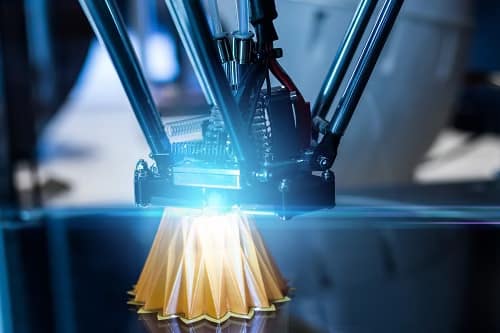Imagine being able to create complex industrial components layer by layer, cutting production time and costs while boosting design flexibility. This isn’t science fiction—it’s the reality of 3D-печать in modern manufacturing. But how is 3D-печать reshaping industries, and why should manufacturers take notice?
What Is 3D-печать?
Also known as additive manufacturing, 3D-печать is a process where material is deposited layer by layer to build a three-dimensional object from a digital design. Unlike traditional subtractive manufacturing methods, which carve out material from a solid block, 3D-печать adds material exactly where needed, reducing waste and enabling intricate designs.
How Does 3D Printing Work?
The 3D-печать process starts with a digital file, typically designed using CAD (Computer-Aided Design) software. The printer reads this file and deposits materials—such as plastics, metals, or ceramics—layer by layer until the final object takes shape. Common 3D-печать techniques include:
- Моделирование методом наплавленного осаждения (FDM): Melts and extrudes thermoplastic filaments.
- Селективное лазерное спекание (SLS): Uses lasers to fuse powdered materials.
- Стереолитография (SLA): Cures liquid resin with ultraviolet light for high precision.
Benefits of 3D Printing in Manufacturing
- Design Flexibility: Allows for complex geometries impossible with traditional manufacturing.
- Быстрое прототипирование: Speeds up the development cycle by quickly producing prototypes.
- Cost-Effective Production: Reduces material waste and lowers production costs for small batches.
- Настройка: Enables tailor-made products without the need for expensive molds.
- Reduced Lead Times: Faster turnaround from design to finished product.
Industrial Applications of 3D Printing
3D-печать is no longer limited to prototypes; it’s actively used in full-scale production:
- Аэрокосмическая промышленность: Lightweight, high-strength parts for aircraft and spacecraft.
- Healthcare: Custom prosthetics, dental implants, and surgical tools.
- Автомобили: Rapid prototyping for design validation and custom parts production.
- Строительство: Large-scale 3D-печать for building components and housing structures.
Challenges of 3D Printing
В то время как 3D-печать offers many advantages, there are still hurdles to overcome:
- Material Limitations: Not all materials are suitable for 3D-печать.
- Production Speed: Slower than traditional manufacturing for high-volume production.
- Post-Processing Requirements: Often requires additional finishing for aesthetic or functional purposes.
- Cost of High-End Printers: Industrial-grade 3D-печать machines can be expensive.
The Future of 3D Printing
The future of 3D-печать is incredibly promising. Innovations like multi-material printing, faster print speeds, and improved material diversity are pushing boundaries. Emerging technologies such as bioprinting and metal 3D-печать are also set to revolutionize industries like healthcare and aerospace.

Final Thoughts
3D-печать is no longer just a prototyping tool—it’s a game-changing force in modern manufacturing. For businesses looking to stay competitive, integrating 3D-печать into their production process offers a clear path toward innovation, efficiency, and customization. The future of manufacturing is being printed, one layer at a time.